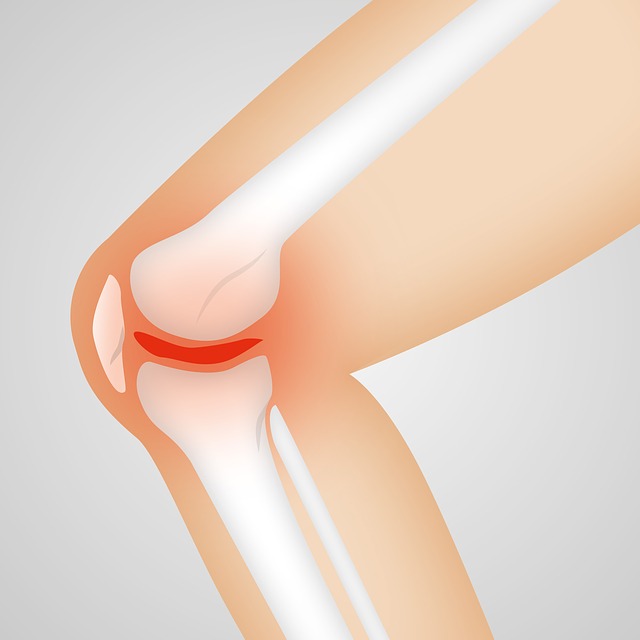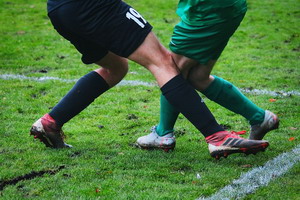 Last week I wrote about feet, and it seemed logical to simply move up a bit and write next about the knees. Next to back and shoulder issues, I probably see more knee problems than any other joints in the body crying out for help. This is not surprising considering the amount of force the two knee joints have to contend with to keep us upright and moving forward in life. You might think the feet have more to deal with, and in terms of simple weight, you would be right. But feet contain 26 bones, 33 joints, 107 ligaments, and 19 muscles all working together to absorb shock, adapt to the terrain, and establish balance. They are exceedingly complex but also highly adaptable. The knees, however, are very simple joints. The thigh bone connects to the shin bone and that’s about it. You have a little bit of bonus action with the kneecap thrown into the mix, but still nothing but simple hinge type movements.
Last week I wrote about feet, and it seemed logical to simply move up a bit and write next about the knees. Next to back and shoulder issues, I probably see more knee problems than any other joints in the body crying out for help. This is not surprising considering the amount of force the two knee joints have to contend with to keep us upright and moving forward in life. You might think the feet have more to deal with, and in terms of simple weight, you would be right. But feet contain 26 bones, 33 joints, 107 ligaments, and 19 muscles all working together to absorb shock, adapt to the terrain, and establish balance. They are exceedingly complex but also highly adaptable. The knees, however, are very simple joints. The thigh bone connects to the shin bone and that’s about it. You have a little bit of bonus action with the kneecap thrown into the mix, but still nothing but simple hinge type movements.
 The foot can move in all sorts of directions to enable us to shift and change directions while moving while the knee joint is a simple hinge joint. Like a door hinge, the knee bends from straight to bending the lower leg back up to 150 degrees. Although quite honestly, many patients I see can barely bend their knee back a bit more than 90 degrees. This becomes a real issue for the lower back because when the knee does not bend as far as it should, you can not squat to pick things up from the floor without having to bend your back forward. This means you end up lifting with your back muscles instead of your leg muscles which compromises your low back.
The foot can move in all sorts of directions to enable us to shift and change directions while moving while the knee joint is a simple hinge joint. Like a door hinge, the knee bends from straight to bending the lower leg back up to 150 degrees. Although quite honestly, many patients I see can barely bend their knee back a bit more than 90 degrees. This becomes a real issue for the lower back because when the knee does not bend as far as it should, you can not squat to pick things up from the floor without having to bend your back forward. This means you end up lifting with your back muscles instead of your leg muscles which compromises your low back.
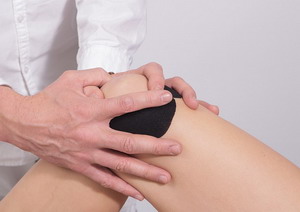 Ninety-nine percent of the time knee pain comes from one of three things – injury, inflammation, or degeneration. When you get injured the precipitating cause is usually obvious – you fell, a dog ran into you, you twisted too far jumping to return the pickleball, or something happened. Clinically it then becomes my job to determine which ligaments, tendons, or cartilages got damaged. This diagnosis tells me what to do and what to tell you to do to support the area while it heals. Here we run into a design weakness for most joints, but the knees especially. Healing first requires clearing out the damaged tissue debris as it quickly becomes toxic if not removed.
Ninety-nine percent of the time knee pain comes from one of three things – injury, inflammation, or degeneration. When you get injured the precipitating cause is usually obvious – you fell, a dog ran into you, you twisted too far jumping to return the pickleball, or something happened. Clinically it then becomes my job to determine which ligaments, tendons, or cartilages got damaged. This diagnosis tells me what to do and what to tell you to do to support the area while it heals. Here we run into a design weakness for most joints, but the knees especially. Healing first requires clearing out the damaged tissue debris as it quickly becomes toxic if not removed.
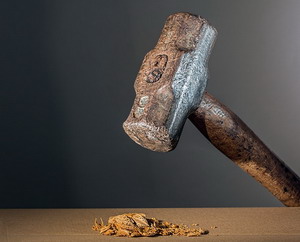 Next, fresh nutrients are needed as building blocks for the remaining cells to build newly repaired tissue. In all the squishy parts of our body, the influx of the proper immune cells for cleaning up the debris and the inflow of fresh nutrients is handled by our blood vessels. But joints are hard tissues that would crush any blood vessels into paste if they tried to grow in or around the joint. Consequently the movement of immune cells and nutrients has to be accomplished by passive diffusion and pressure changes in the cellular fluid around the joint. These pressure changes are generated by the movement of the joint. Basically, if the joint can’t move it is extremely difficult for it to heal. As we will see in a moment, this same scenario is the reason why joints degenerate with age.
Next, fresh nutrients are needed as building blocks for the remaining cells to build newly repaired tissue. In all the squishy parts of our body, the influx of the proper immune cells for cleaning up the debris and the inflow of fresh nutrients is handled by our blood vessels. But joints are hard tissues that would crush any blood vessels into paste if they tried to grow in or around the joint. Consequently the movement of immune cells and nutrients has to be accomplished by passive diffusion and pressure changes in the cellular fluid around the joint. These pressure changes are generated by the movement of the joint. Basically, if the joint can’t move it is extremely difficult for it to heal. As we will see in a moment, this same scenario is the reason why joints degenerate with age.
 Inflammation says that something is attacking the joint and compromising its function. The attacking agent might be an infection due to an injury (or surgery) allowing harmful bacteria into the joint. The attack may come from plant defense chemicals, like solanine from potatoes and tomatoes, which loves to attack the chemical structure of cartilage. The attack may come from an autoimmune condition, like rheumatoid or scleroderma, or psoriasis in which our own immune cells attack our joint tissues. The attack could even come from internal defense chemicals like cytokines released to help us fight off a viral infection. Toxic waste building up in our body such as uric acid can inflame joints. The list of attackers that can cause joint inflammation is very long. The simple answer to all of these possible causes of inflamed joints is to remove the attacker. Sometimes that is as simple as removing potatoes from your diet. Other times, as in autoimmune disease, you will be fighting these causes for the rest of your life.
Inflammation says that something is attacking the joint and compromising its function. The attacking agent might be an infection due to an injury (or surgery) allowing harmful bacteria into the joint. The attack may come from plant defense chemicals, like solanine from potatoes and tomatoes, which loves to attack the chemical structure of cartilage. The attack may come from an autoimmune condition, like rheumatoid or scleroderma, or psoriasis in which our own immune cells attack our joint tissues. The attack could even come from internal defense chemicals like cytokines released to help us fight off a viral infection. Toxic waste building up in our body such as uric acid can inflame joints. The list of attackers that can cause joint inflammation is very long. The simple answer to all of these possible causes of inflamed joints is to remove the attacker. Sometimes that is as simple as removing potatoes from your diet. Other times, as in autoimmune disease, you will be fighting these causes for the rest of your life.
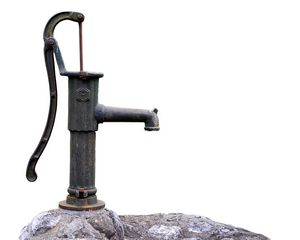 The most common reason for knee pain I see in patients is degeneration. Your MD will tell you that you are just getting older and you have simply worn out your joints. This is completely false. Long-term studies on many different populations all show that the more you use your knees the healthier they are and the longer they last. The reason for this is that it is a movement that creates the fluid exchange in the joints to flush away old cells and bring in nutrition to build new cells. We understand that if our heart stops beating and pumping oxygen and nutrition to the tissues of our body, the body dies. Movement does for the joints what heartbeats do for the squishy parts of our body. Without movement joints degenerate. When we are little kids, we do a lot of movement. But once they grab us and put us in school, we are trained to stop moving. We are told to sit still and do our work. Most of us end up eventually moving on to jobs that involve mostly sitting. Then we get off work and go home and sit some more in front of the TV or computer. None of those things move the knees. We might get a little arm movement using the keyboard or remote, but nobody is moving the knees. This is why most knees degenerate. Medicine calls this osteoarthritis — wear, and tear arthritis. But the reality is this is a lack of movement arthritis. Here is a good video to start to change this.
The most common reason for knee pain I see in patients is degeneration. Your MD will tell you that you are just getting older and you have simply worn out your joints. This is completely false. Long-term studies on many different populations all show that the more you use your knees the healthier they are and the longer they last. The reason for this is that it is a movement that creates the fluid exchange in the joints to flush away old cells and bring in nutrition to build new cells. We understand that if our heart stops beating and pumping oxygen and nutrition to the tissues of our body, the body dies. Movement does for the joints what heartbeats do for the squishy parts of our body. Without movement joints degenerate. When we are little kids, we do a lot of movement. But once they grab us and put us in school, we are trained to stop moving. We are told to sit still and do our work. Most of us end up eventually moving on to jobs that involve mostly sitting. Then we get off work and go home and sit some more in front of the TV or computer. None of those things move the knees. We might get a little arm movement using the keyboard or remote, but nobody is moving the knees. This is why most knees degenerate. Medicine calls this osteoarthritis — wear, and tear arthritis. But the reality is this is a lack of movement arthritis. Here is a good video to start to change this.
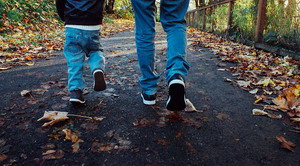 I wrote about knee exercises a couple of years ago which you can check out here. But recently I came across some new information for working with restoring knee function that sounds quite good. My brother had mentioned it to me back when I wrote the last article, but I had not seen or read anything specific about it — backward walking. But now that I have learned more about it, the concept makes a lot of sense and I want to share it. Walking backward is just the warm-up. The real rehab comes into play when you actually work those muscles like pulling back on a rope. The challenge is figuring out how to implement this in a practical manner.
I wrote about knee exercises a couple of years ago which you can check out here. But recently I came across some new information for working with restoring knee function that sounds quite good. My brother had mentioned it to me back when I wrote the last article, but I had not seen or read anything specific about it — backward walking. But now that I have learned more about it, the concept makes a lot of sense and I want to share it. Walking backward is just the warm-up. The real rehab comes into play when you actually work those muscles like pulling back on a rope. The challenge is figuring out how to implement this in a practical manner.
 In my previous article, I wrote about how knee stability and preventing knee pain and injury come down to good balance and coordination in the muscles around the knee. What I was shown is how our normal lifestyle automatically creates primary muscle imbalance in the knees. A similar example is seen in how our lifestyle of sitting a lot automatically creates an imbalance in the back muscles by shortening and tightening the psoas muscles that go from the low back to the groin and weakening the counterbalancing spine stabilizer muscles in the low back. In the case of our knees, we have developed a forward-movement lifestyle. When we aren’t sitting down, we are moving forward using just the hip and leg muscles in just one direction. Our feet are always striking the ground heel first and then the hip and back of the leg muscles contract to propel us forward. We use these same muscles in the same way when we lift objects. Muscles are designed to work in two directions. The concentric contraction movement and the eccentric extension movement should both be used. We are missing an activity that uses and balances half the muscles that are supposed to stabilize our knees. The result is repeated micro trauma to the knees due to this joint instability while we use them.
In my previous article, I wrote about how knee stability and preventing knee pain and injury come down to good balance and coordination in the muscles around the knee. What I was shown is how our normal lifestyle automatically creates primary muscle imbalance in the knees. A similar example is seen in how our lifestyle of sitting a lot automatically creates an imbalance in the back muscles by shortening and tightening the psoas muscles that go from the low back to the groin and weakening the counterbalancing spine stabilizer muscles in the low back. In the case of our knees, we have developed a forward-movement lifestyle. When we aren’t sitting down, we are moving forward using just the hip and leg muscles in just one direction. Our feet are always striking the ground heel first and then the hip and back of the leg muscles contract to propel us forward. We use these same muscles in the same way when we lift objects. Muscles are designed to work in two directions. The concentric contraction movement and the eccentric extension movement should both be used. We are missing an activity that uses and balances half the muscles that are supposed to stabilize our knees. The result is repeated micro trauma to the knees due to this joint instability while we use them.
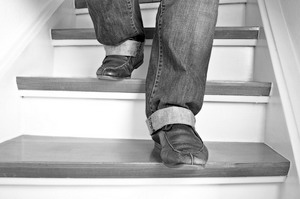 The first step (pun intended) would be to walk backward for some time each day. If we can do this on a hill, this is even better. At home, you can walk backward up a couple of steps repeatedly. I tried leaning back a bit and using an elliptical trainer in reverse, boy that fatigued my knees within 30 seconds. If you have a home treadmill, without turning it on, back into it and push the tread down towards the end of the treadmill. The net result is you will be walking backward against resistance. Another good muscle to train is the one in the front of the lower leg (tibialis anterior). Here is a video on this.
The first step (pun intended) would be to walk backward for some time each day. If we can do this on a hill, this is even better. At home, you can walk backward up a couple of steps repeatedly. I tried leaning back a bit and using an elliptical trainer in reverse, boy that fatigued my knees within 30 seconds. If you have a home treadmill, without turning it on, back into it and push the tread down towards the end of the treadmill. The net result is you will be walking backward against resistance. Another good muscle to train is the one in the front of the lower leg (tibialis anterior). Here is a video on this.
Knee Ability Zero, Step 1: Tibialis Raise
Basically, the general idea is to both strengthen and stretch the muscles around the knee in every manner possible. This nourishes the knee and stabilizes the knee which will prevent and even reverse some degenerative changes.
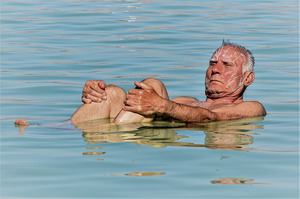 I recommend everyone love their knees enough to give them the types of movement that will keep them healthy and you away from the surgeon’s knife.
I recommend everyone love their knees enough to give them the types of movement that will keep them healthy and you away from the surgeon’s knife.
Take care
David
